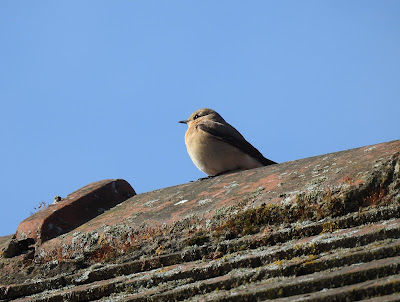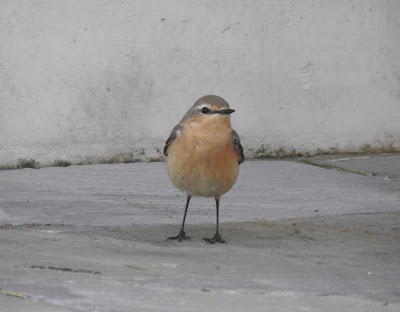A couple of years ago when we were holidaying in Argyll, and staying in a lovely old cottage overlooking Loch Feochan, we spent a day on the delightful island of Kerrera just off the Scottish mainland near Oban. If you ever find yourself in Oban, I can't recommend a day on Kerrera too much, it's a beautiful place.
There are no shops on Kerrera, just the lovely, quirky tea garden. There are no cars either, just glorious peace and quiet, other than the abundant wildlife. You have to walk to the tea garden, and it's located at the southern end of a circular walk route (which I highly recommend), close to the stunning Gylen Castle.
When you get off the small ferry (foot passengers only), and set off on the circular walk there are lots of signs and teapots that guide you to the tea garden. I have posted some of them below.
Some tasty morsels on the 'specials' board
Gail perusing the menu
On the day we were there we spent the whole day on the island. We had lunch at the tea garden and then headed to Gylen Castle. After we had been to the castle, we detoured back to the tea garden, for cake and coffee in the afternoon. It was that good!
Gylen Castle (above & below)
I've just pulled my notebook off the book shelf to see what we saw on our circular walk around the southern half of Kerrera and it has reminded me that we saw lots of breeding birds, mainly warblers, chats etc. We did see lots of wildflowers too, but rather ashamedly I didn't make a note of them in my notebook! I was probably too busy looking at the birds and gasping aloud at the stunning scenery!
Anyway, some of the birds that we saw included twelve Willow Warblers, five Song Thrushes (as good as anywhere these days), a Peregrine, a Spotted Flycatcher, four Wheatears (including a female carrying food & a juvenile), two Buzzards, a Blackcap, nine Hooded Crows, a singing Yellowhammer, five Stonechats, four Whitethroats, two Siskins, five Linnets, three Ravens and a Rock Dove!
Some of the views from Kerrera back to the mainland, and to other islands were stupendous.
Looking north from Kerrera
Back on planet Earth, and back to my lockdown garden bird list, I have added two species since I last updated you; Pied Wagtail and a singing Blackcap. The moth trap has been quiet, mainly because I haven't operated it for a couple of nights because of rain, but yesterday I caught a classic Spring migrant in the form of a Silver Y. It's going to be another wet one tonight, so it might be Thursday night before I run it again.


















































